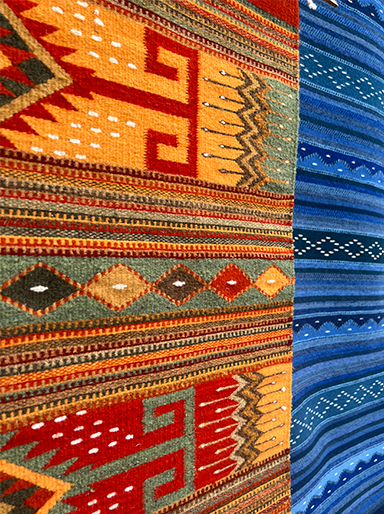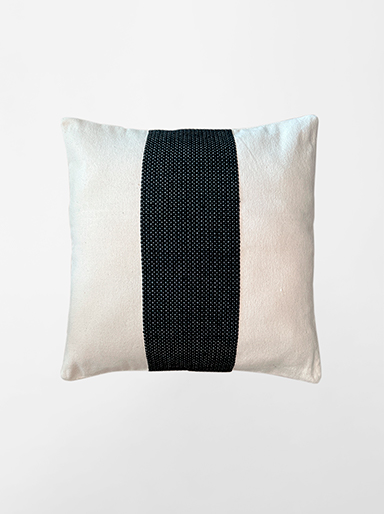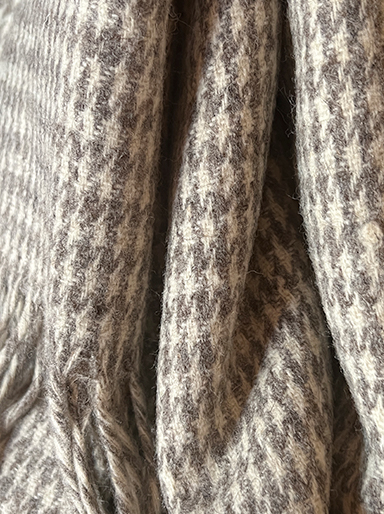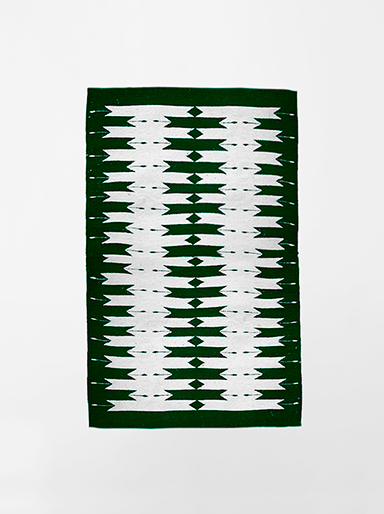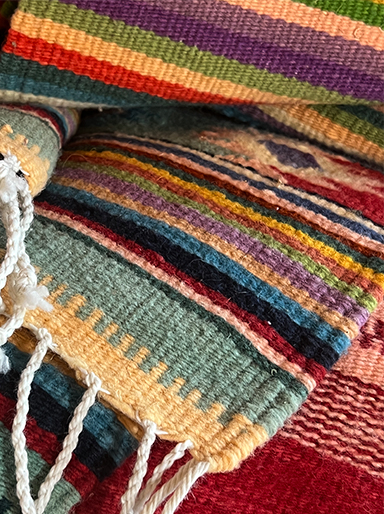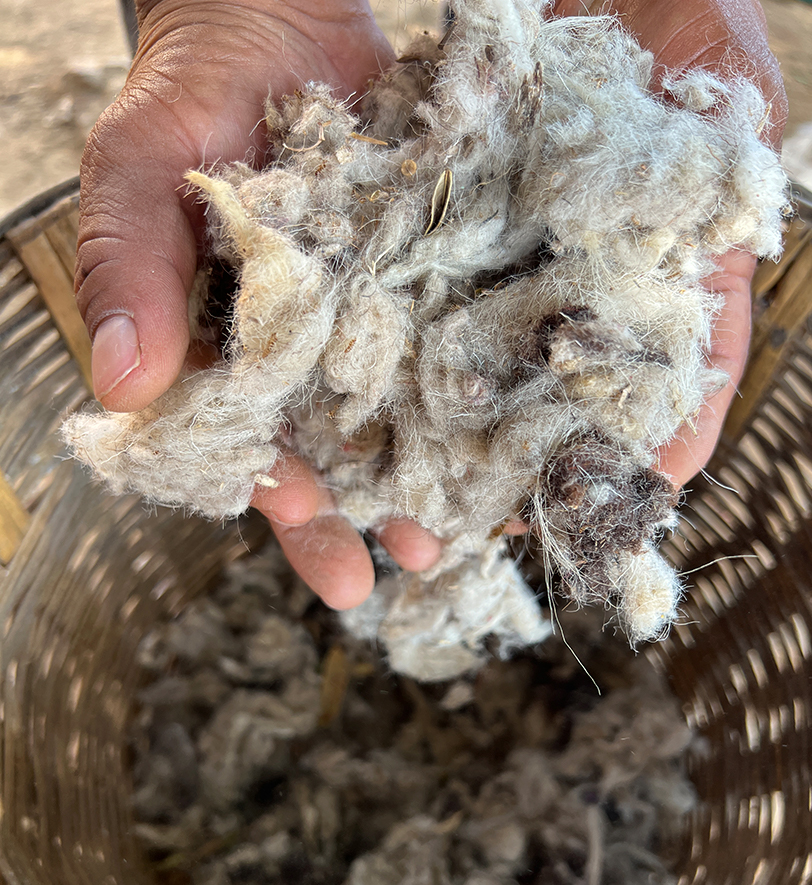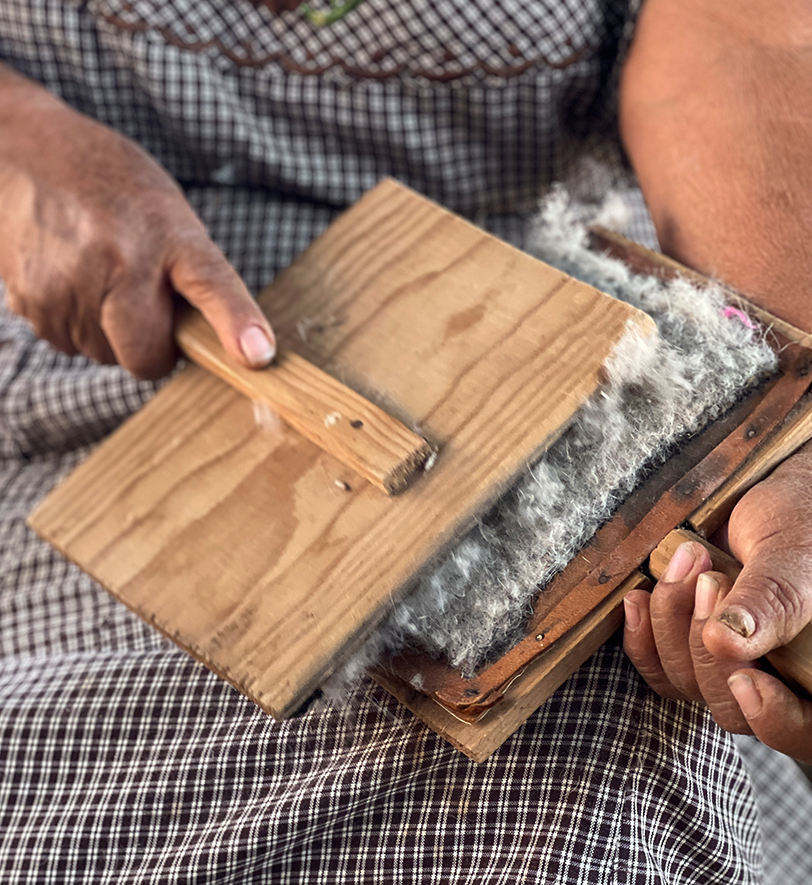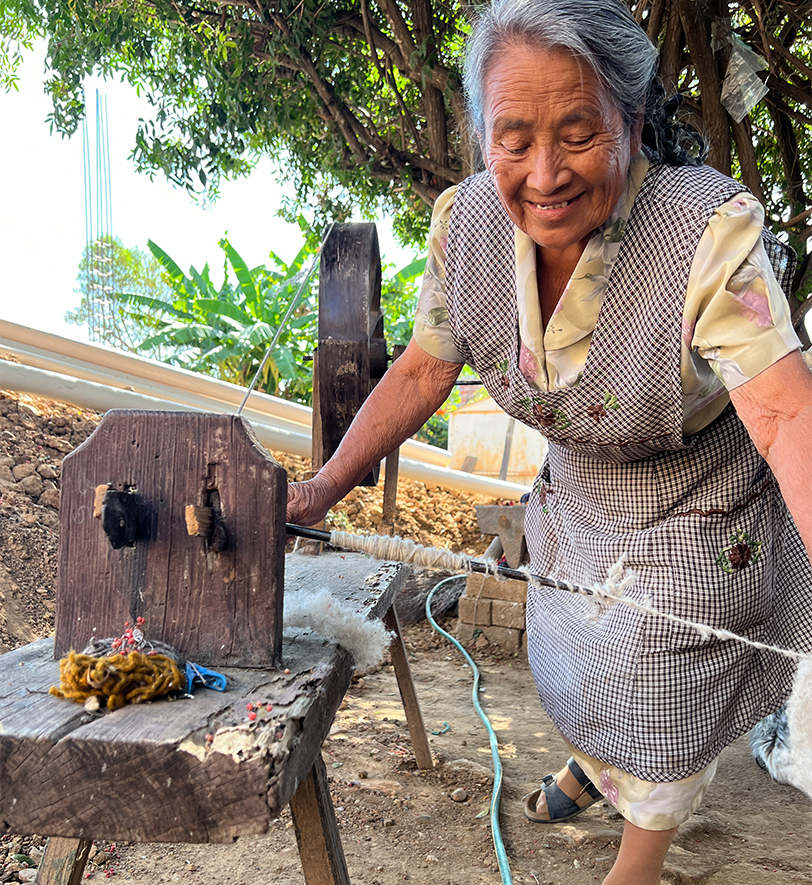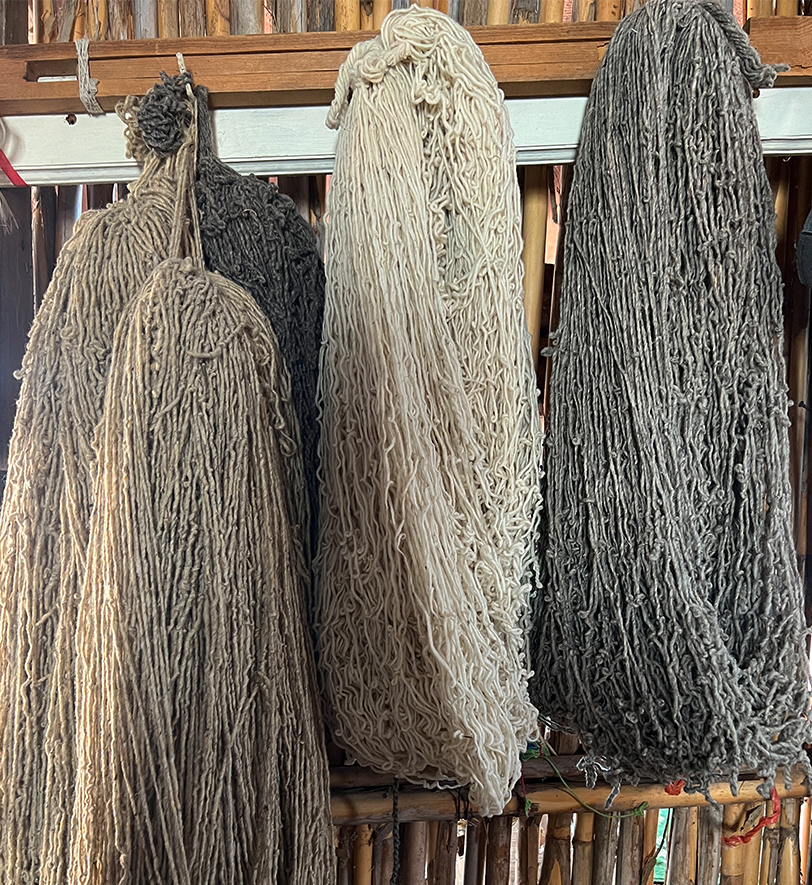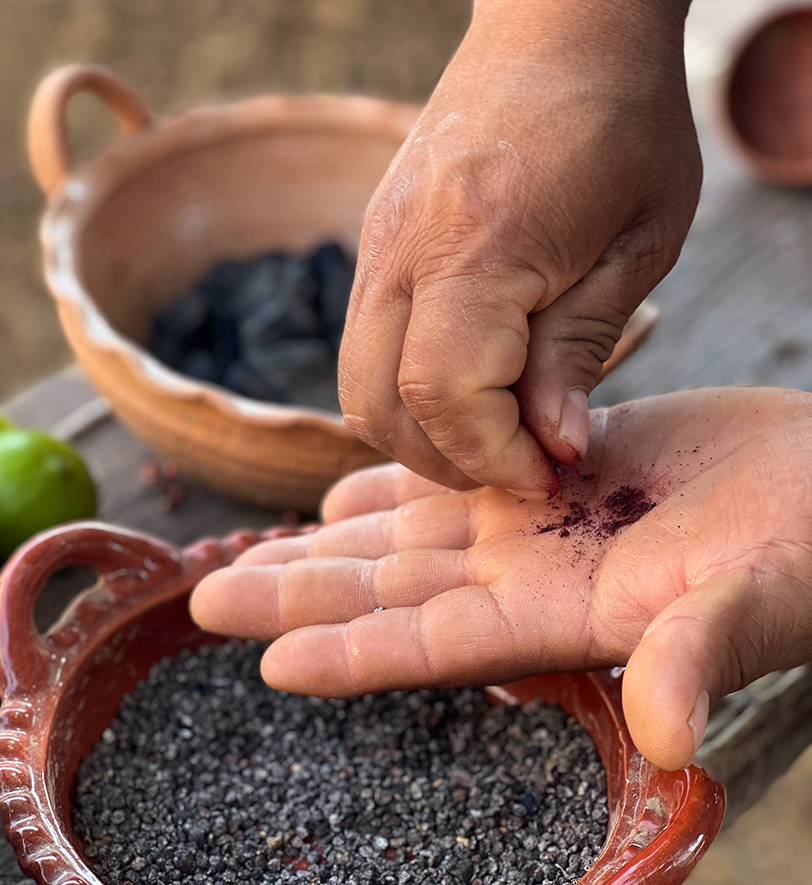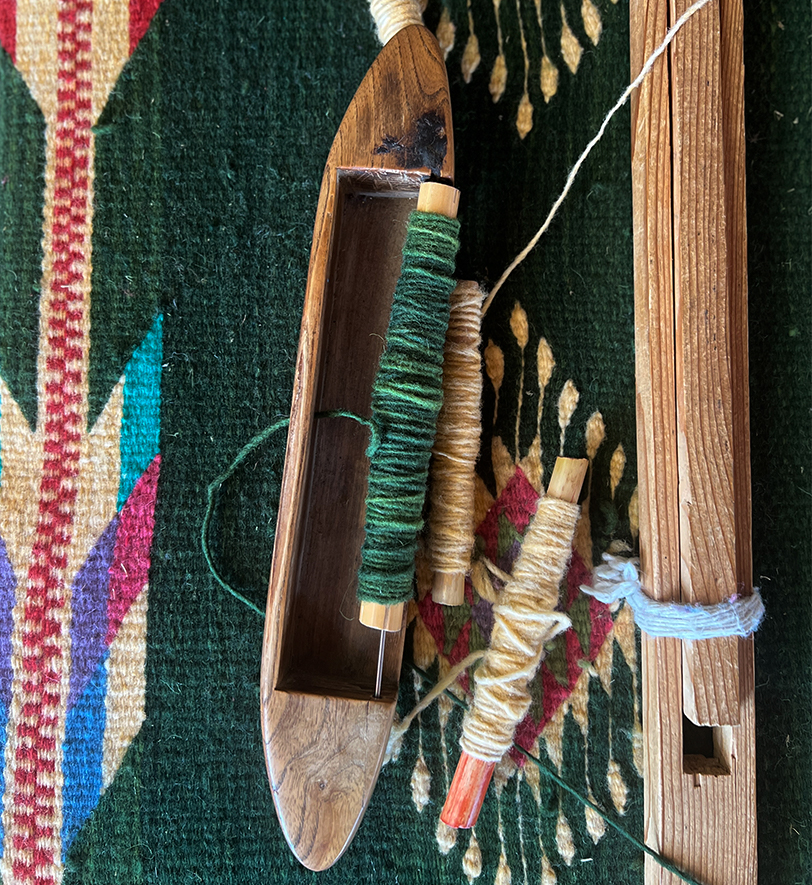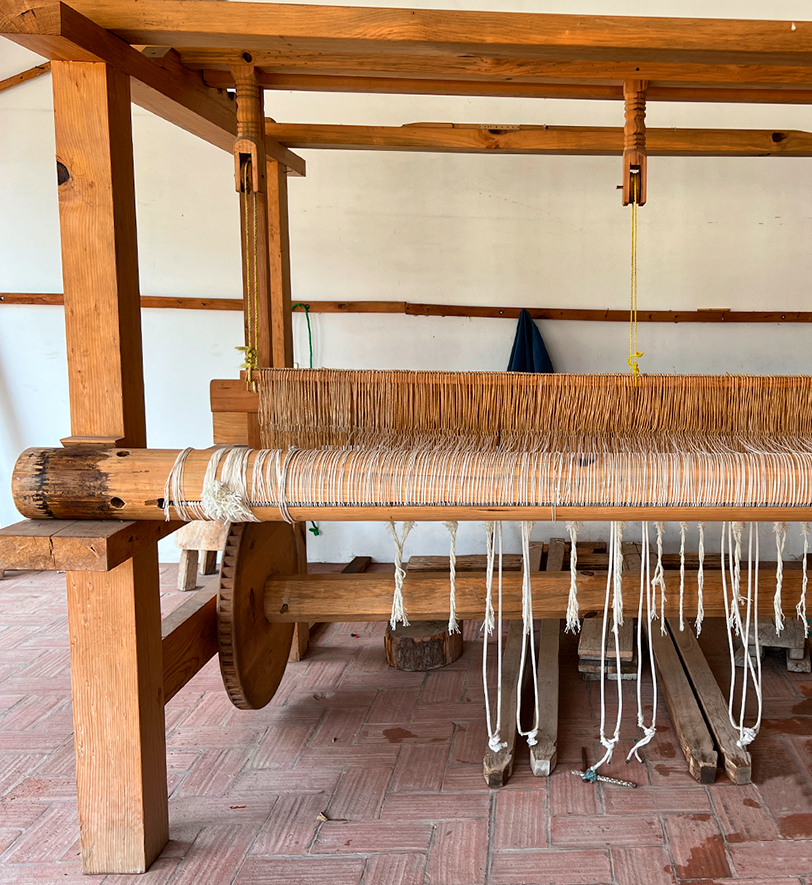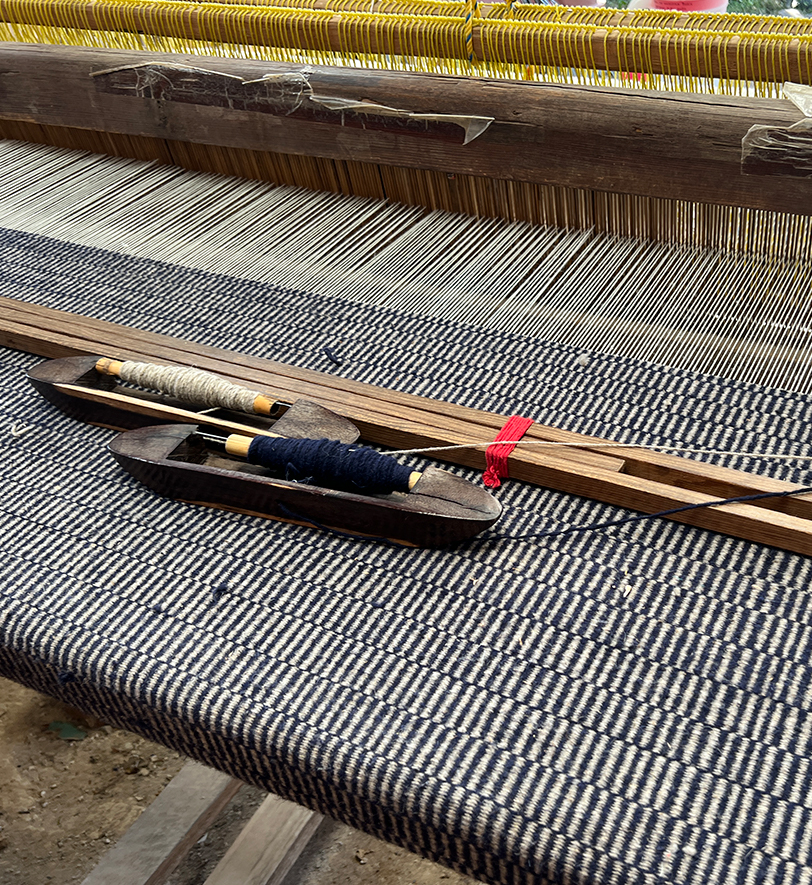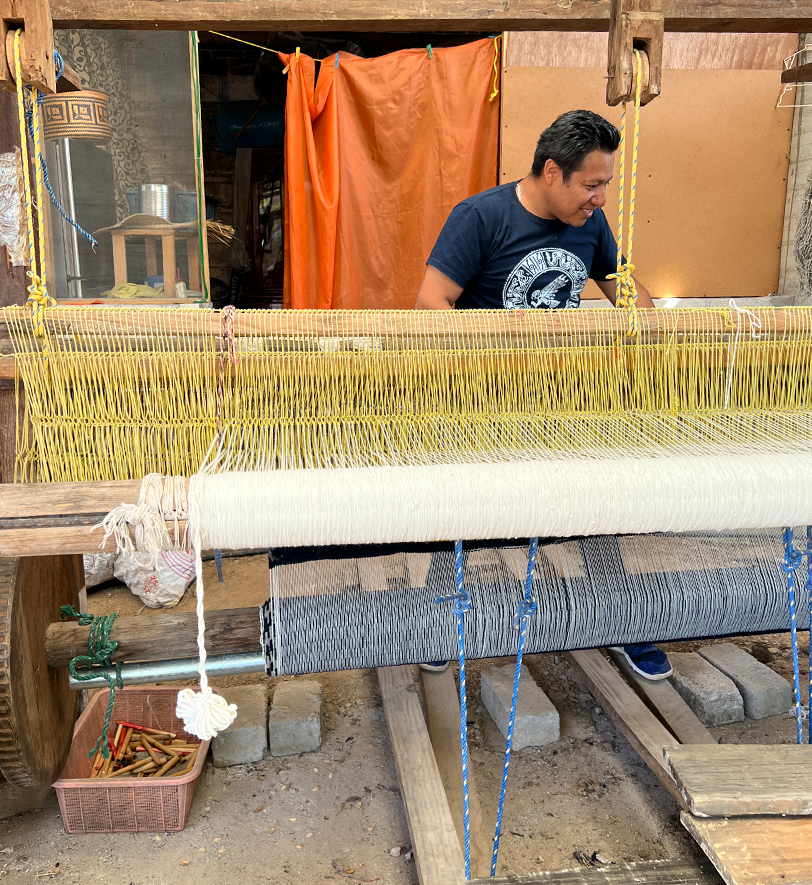History
The treadle loom technique is assumed to have been developed in China, evolving in Europe by the 11th century, and was introduced in Mexico in the 16th century during the Spanish colonization.
This type of loom is commonly used to create rugs, blankets and other everyday objects.
Process
Extraction
Initially, the wool is extracted from the sheep and then washed and dried.
Brush
The manual process involves carding the wool to align the fibers in the same direction.
Threading
The wool is spun with the help of a spinning wheel until it gradually transforms into a durable thread.
Distaff
By winding the thread around a square platform, the threads are organized to form a skein.
Dyed
The threads go through a dyeing process that lasts between 7 and 31 days (depending on the color). For this, a vessel is filled with water and natural dye, boiled, and then the wool is immersed in its natural state. The dye is obtained from different combinations of flowers, plants, and fruits.
Loom preparation
Each thread is individually tied (around 3,000 to 4,000 threads). The looms are made of wood and are so sturdy that they have been passed down from generation to generation, with some being used for up to 100 years. If the piece is made of cotton instead of wool, this step marks the beginning of its process.
Ideation
With the materials ready, they envision the design, drawing inspiration from landscapes, Zapotec fretwork, and other contemporary figures.
Weave
By learning to move the feet and hands in a coordinated way on the loom, we begin to form figures on the canvas. The movement simulates a choreography characterized by an unparalleled rhythm and coordination. To achieve this it takes years of experience and passion for the craft of weaving. In this process, the threads intertwine to form the canvas.
The elaboration of a piece with wool yarns takes more than a year of work, from extraction to weaving.

